Digital marketing’s moving fast—faster than anyone can really keep up with, honestly. Marketers are always on the hunt for the next big thing, and lately, artificial intelligence has taken center stage. These AI-powered tools are shaking things up, making it easier to run campaigns, connect with customers, and get more done without burning out your team. Businesses—big and small—are seeing real results and saving time, all thanks to smarter tech doing some of the heavy lifting.
In just the last year, the number of AI marketing tools has exploded. Each one claims to change the game in its own way, whether it’s for content, social media, data crunching, or customer targeting. Brands are using these tools to reach people in ways that just weren’t possible before. Here’s a list of ten AI tools that are genuinely making waves for marketers who want to boost engagement and conversions in 2025.
1) ChatGPT
Since OpenAI launched ChatGPT, it’s become a staple for digital marketers. This conversational AI helps teams whip up engaging content, write ad copy, and quickly answer customer questions—all without breaking a sweat.
Australian marketing agencies have worked ChatGPT into their daily routines to speed up content creation. Its knack for understanding context and writing like a real person means businesses can keep their messaging consistent across all platforms.
When marketers get stuck staring at a blank page, ChatGPT steps in with creative campaign ideas. It’s handy for drafting everything from social posts to blogs and newsletters that actually sound human.
It’s also useful for market research—ChatGPT can dig through customer feedback and spot trends. Recent updates have made it even better at generating accurate, localised content for the Aussie market.
Still, you can’t just set it and forget it. Marketers need to tweak and check what ChatGPT spits out to keep the brand’s voice on point and avoid mistakes. The best results come when people use it as a smart sidekick, not a total replacement for real creativity.
Link: https://chatgpt.com/
2) Claude
Claude, built by Anthropic, is quickly winning over digital marketers in Australia. This AI assistant does a solid job with content creation, automating customer service, and digging into market analysis.
Claude’s real strength is how well it gets context and follows human instructions. Unlike some other tools, it keeps conversations coherent even during long brainstorming sessions—super helpful for mapping out big marketing strategies.
Marketing teams like that Claude can sift through consumer sentiment data and pull out insights you might otherwise miss. It gives brands a clearer picture of what their audience really wants (or doesn’t).
Claude is flexible, drafting everything from social posts to in-depth blogs while adapting its writing style to match different brand voices.
Its ethical design is a big plus, aiming to cut down on bias and problematic outputs. That’s important for brands that care about their public image.
Marketers also lean on Claude to summarise mountains of information, making it easier to spot trends and keep an eye on the competition.
Link: https://claude.ai/
3) Perplexity
Perplexity’s quickly becoming a go-to AI research assistant for marketers in Australia. It fuses large language models with real-time web searches, so you get solid, up-to-date info without wading through endless search results.
Unlike regular search engines, Perplexity delivers straight answers to tricky marketing questions and backs them up with sources. That’s a huge time-saver when you’re researching competitors or tracking the latest trends.
Teams use Perplexity for content research and strategy planning. It can scan recent industry news and suggest fresh content ideas that might click with your audience.
Australian businesses appreciate how Perplexity condenses loads of info into easy-to-digest insights. Staying on top of the fast-changing digital scene gets way less overwhelming.
The Pro version adds perks like image search and deeper analysis. It’s still pretty new, but Perplexity’s already changing how marketers gather and process campaign intel.
Link: https://perplexity.com/
4) Whatagraph
Whatagraph is shaking up data visualisation for marketers with its AI-driven analytics and reporting. It pulls data from all your marketing channels and turns it into eye-catching, easy-to-read reports and dashboards—no more squinting at messy spreadsheets.
The AI digs into campaign data, spotting patterns and trends you might otherwise miss. Automated reporting means marketers can pull together results from socials, Google Analytics, email, and more without spending all day on it.
Whatagraph’s interface is actually friendly—no coding required. Even folks who aren’t data nerds can build reports that impress clients and higher-ups.
Customisable templates let you match reports to your brand and specific needs. Real-time updates mean teams always have the latest numbers for quick decision-making.
Plenty of Aussie agencies have jumped on board, streamlining their reporting and delivering sharper insights to clients.
Link: https://whatagraph.com/
5) Jasper
Jasper’s one of the most flexible AI copywriting tools out there for digital marketers. It uses advanced language models to crank out quality content for just about anything—blogs, social captions, emails, ads, you name it.
Jasper stands out because it gets your brand voice and keeps things consistent across all your content. With 50+ marketing templates, teams can speed up writing without losing that personal touch.
Australian businesses use Jasper to scale content production—no need to trade quality for quantity. The interface is straightforward, so even non-techies can jump in and start creating.
It plays nicely with other marketing tools, including SEO platforms and content management systems. That integration keeps workflows smooth and publishing schedules on track.
Recent updates have made Jasper even better at handling Aussie slang and cultural references, so local campaigns feel authentic.
Link: https://www.jasper.ai/
6) Albert AI
Albert AI is a bit of a powerhouse, using machine learning to optimise ad campaigns. It handles autonomous media buying across channels and often delivers a better ROI for marketers.
Albert analyses past campaign data to make smart calls on budget allocation. It keeps learning from performance metrics, tweaking strategies on the fly—so you don’t have to babysit it all day.
One of its best tricks is finding audience segments that human marketers might miss, leading to more targeted campaigns and, usually, better conversion rates.
Australian brands have seen real improvements in campaign results after bringing in Albert AI. Customer acquisition costs often drop while conversions go up.
Albert fits in with your existing marketing stack, so you don’t have to overhaul everything to get started.
The reporting dashboard is clear and actionable. Marketers can quickly see what’s working and what needs a tweak, without drowning in data.
Link: https://albert.ai/
7) Notion AI
Notion AI is changing how marketers organise and create content right inside their workspace. It plugs into Notion’s productivity platform, giving teams tools for generating, summarising, and editing content without ever leaving the app.
Marketers can draft social posts, emails, and blog outlines fast, all while keeping everything in one place. Notion AI checks your existing content to keep the brand voice steady and suggests tweaks to boost clarity and engagement.
One cool feature: turn messy notes into polished marketing copy with a click. That’s hours saved on editing, freeing up time for bigger-picture work.
It also does a solid job summarising long research docs and competitor analyses, pulling out the key points so decisions come faster.
Notion AI helps keep project databases tidy, too. It can auto-categorise content, tag teammates, and even spot connections between different marketing projects.
Link: https://www.notion.com/product/ai
8) Lexica Art
Lexica Art is making visual content creation way less intimidating for marketers. With its AI-powered image generator, teams can whip up custom visuals—no design degree required.
Marketers in Australia are using Lexica Art for eye-catching social posts, ads, and website graphics that actually connect with their audience. The interface is simple, so anyone can give it a go.
Lexica Art’s huge style library and smart prompt understanding set it apart. Just describe what you want in plain English, and the AI delivers visuals that fit your brand’s vibe.
Need consistent visuals across a whole campaign? Lexica Art keeps the style coherent, so your brand always looks sharp.
Recent updates have improved commercial usability and cut down on copyright headaches. With visuals dominating digital marketing, Lexica Art gives teams an edge in grabbing attention.
Link: https://lexica.art/
9) Crayo
Crayo is gaining momentum in digital marketing for its AI-powered creative content generation. It helps marketers get past creative ruts by generating visuals and copy that fit specific campaign needs.
Crayo’s smart about brand voice and audience preferences. Just punch in the basics, and it spits out a bunch of creative options that stay true to your brand but still feel fresh.
It analyses what’s worked in other industries, suggesting content that’s likely to land with your audience.
Australian businesses say Crayo has seriously sped up their creative process. Projects that dragged on for weeks now wrap up in days, with no dip in quality.
Crayo personalises ads for different audience segments automatically—a level of customisation that used to take a ton of resources.
The platform’s always evolving, with updates shaped by user feedback and market shifts. For marketers who want to stay creative and efficient, Crayo’s a must-have in the toolkit.
Link: https://crayo.ai/
10) Google Gemini
Google Gemini is a big leap forward in AI for digital marketing. As the follow-up to Google Bard, it packs powerful features for content creation, audience analysis, and campaign optimisation.
With advanced natural language processing, Gemini helps marketers write ad copy and social posts that actually click with Aussie audiences. It digs into consumer behaviour, surfacing insights that would’ve taken ages to uncover manually.
Gemini can process text, images, and video at the same time, giving marketers a more complete view of how campaigns are performing across channels.
Australian businesses have seen time savings using Gemini for competitor analysis and trend spotting. The AI constantly scans online spaces, delivering real-time updates on what’s happening in your industry and what your customers care about.
Its predictive analytics help marketers forecast campaign results and make smarter calls on where to spend their budget. Small businesses, especially, seem to get a lot of value from this kind of data-driven decision-making.
Link: https://gemini.google.com/
Conclusion
The AI revolution in digital marketing is underway, and honestly, it’s changing the way brands reach people. These ten tools? Just a glimpse of what’s out there when artificial intelligence meets marketing strategy.
Marketers who dive in early tend to see real benefits—faster workflows, better personalization, smarter choices based on data. Instead of grinding through the same old tasks, creative teams finally get more room to think big and try new ideas.
Sure, trying out new tech can be intimidating, but the possible payoff is hard to ignore. Plenty of these platforms have free trials or flexible pricing, so even smaller teams can jump in without huge risk.
As AI keeps getting smarter, the whole marketing world’s bound to keep shifting. Keeping an eye on these tools—and just tinkering with them when you can—might be the difference between leading the pack and getting left behind.
Honestly, the sharpest strategies probably won’t rely on just one tool. Mixing and matching a few AI solutions can build a workflow that covers everything from brainstorming content to figuring out exactly who you’re talking to.
But let’s be real: AI’s at its best when humans are calling the shots. These tools are here to help, not to replace the creativity and insight that marketers bring to the table.




















